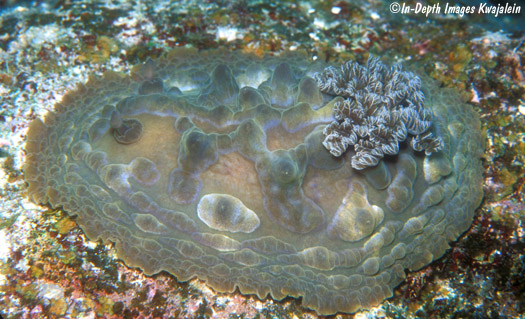
The unmistakable species Asteronotus cespitosus is known from the Marshalls from about a dozen specimens so far. Most of them, including four clustered together with egg masses, were found at a depth of about 3 meters in Kwajalein Harbor under sheets of aluminum siding blown into the water by a storm. This and other aluminum debris that rest on the sand and Halimeda algae bottom under our moored boat have proven very fruitful as "nudibranch collectors." A number of other species are known from the Marshalls solely from specimens found under these few sheets of aluminum. Two more specimens were found together at low tide on an intertidal reef southeast of Roi-Namur Island in Kwajalein Atoll.

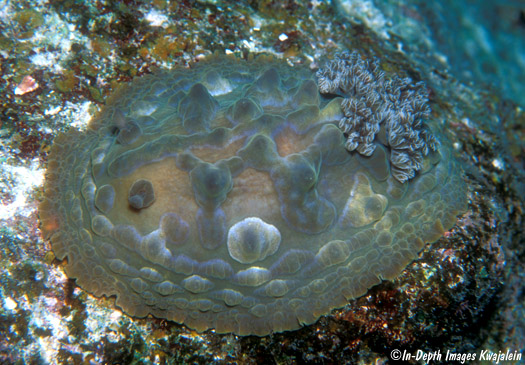
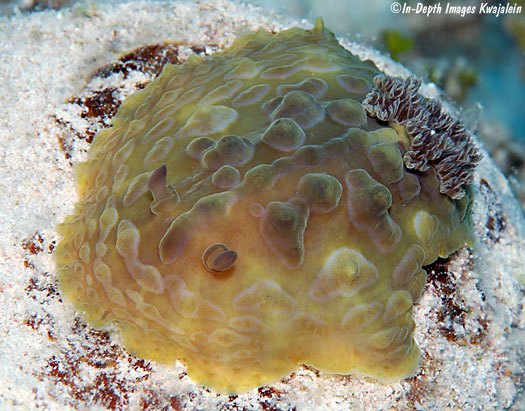
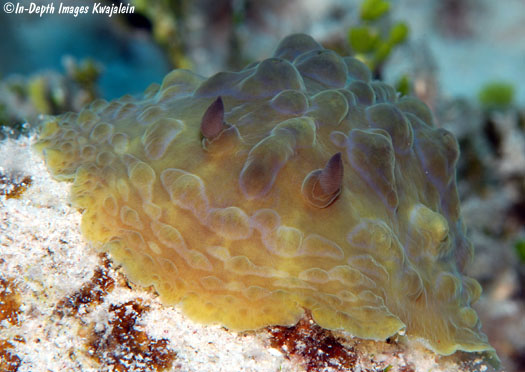
The shot below shows the anterior end with the rhinophores.
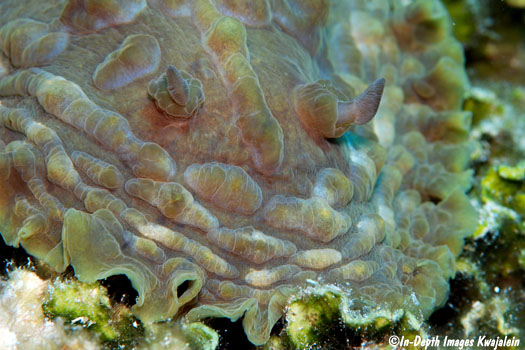
Here is a close-up of the branching gills.
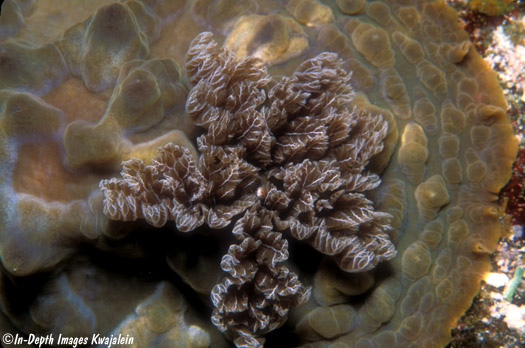
When found, the two animals had just deposited an egg mass on the sponge-encrusted undersurface of the aluminum sheet. This image is captured from video and is therefore not very clear.
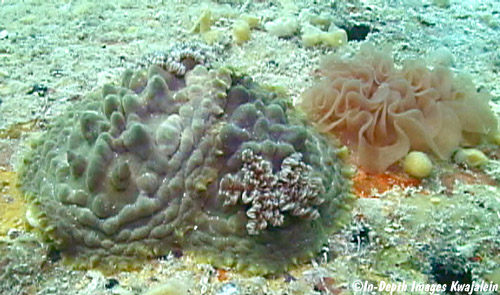
The two below were observed in the harbor on 1 July 2012.
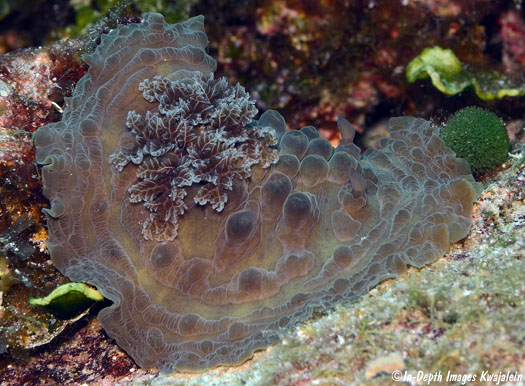
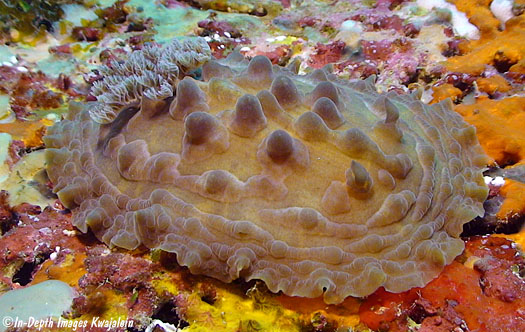
Another large pair found in Kwajalein Harbor in May, 2016.
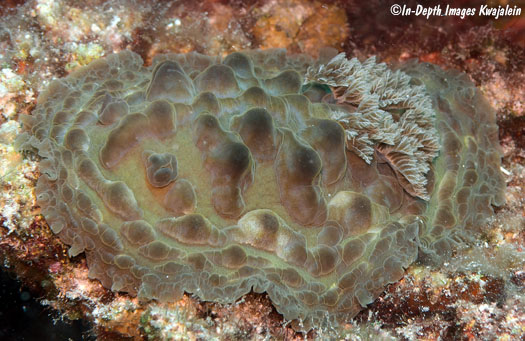
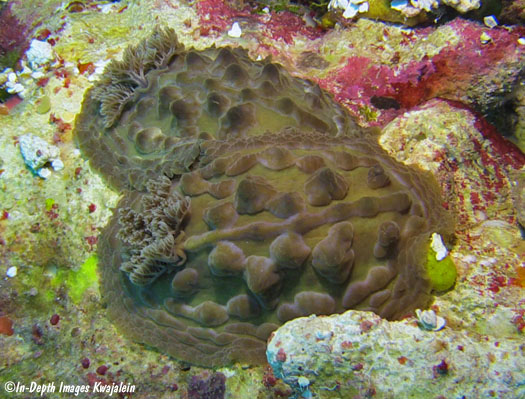
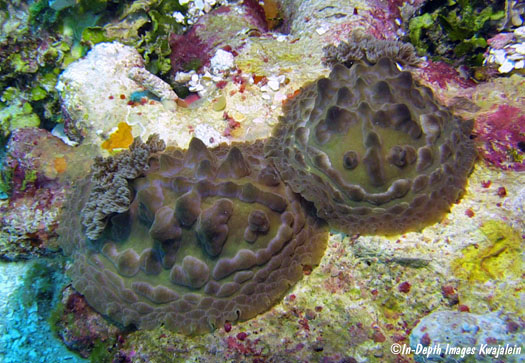
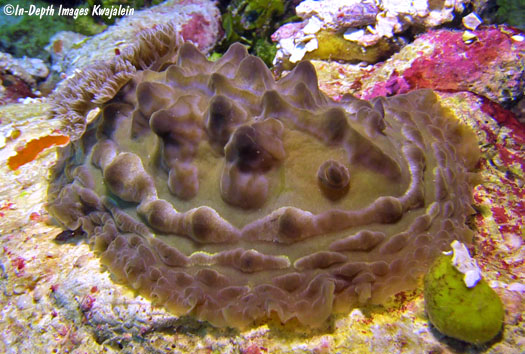
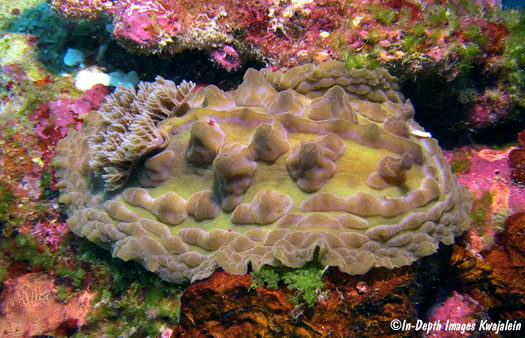
The specimen below appeared to be a young one of these. It measured 50mm, well under half the length of our adult specimens. It was found in Kwajalein lagoon in a patch of Halimeda and other algae at a depth of 8m on 27 December 2008.
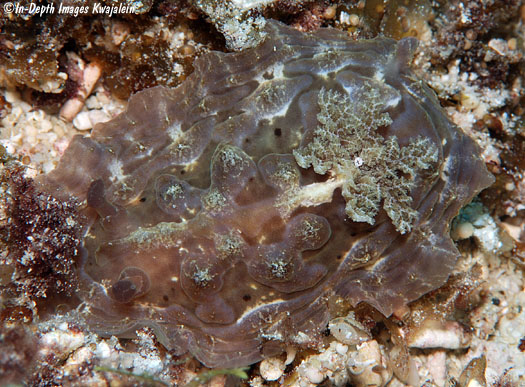
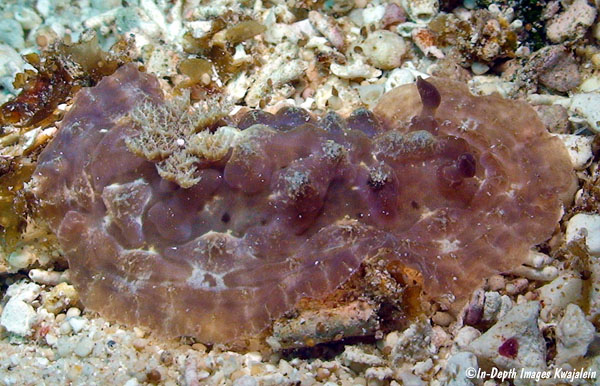
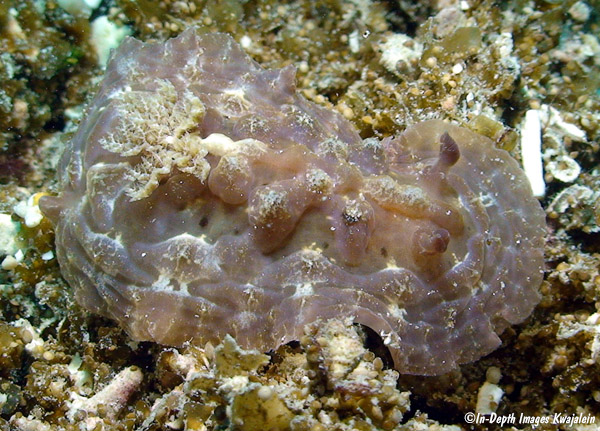
Although somewhat different in appearance, the small, 30mm specimen below is clearly tied in with the intermediate sized ones above by the white encrustations on the dorsal bumps, the scattered dark spots, and the smooth middorsal ridge running from between the rhinophores to the gills. The white encrustations and dark spots are lost as they grow to adult size. This one was found under a rock in shallow water at Enewetak Atoll on 19 July 1982.
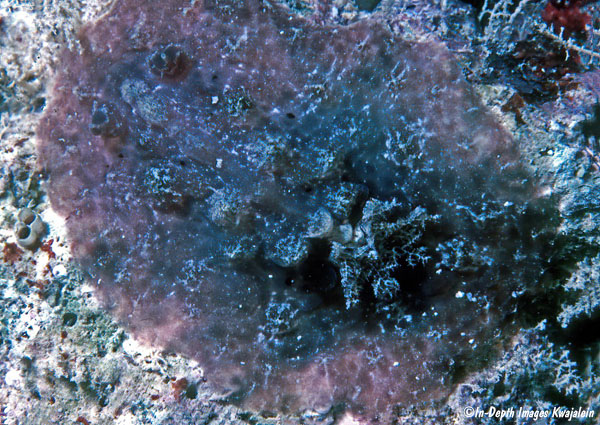
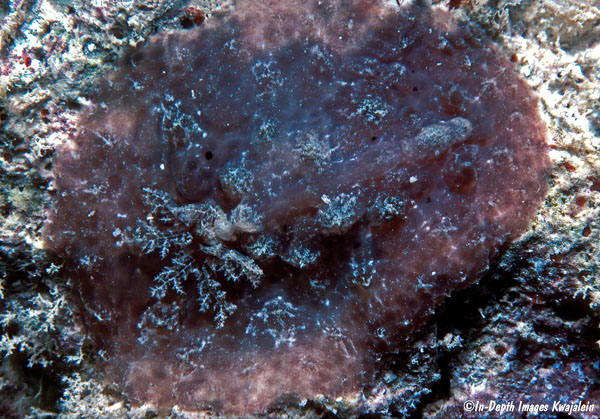
Created 15 December 2006
Updated 8 January 2022